Proportions matter a lot in mixing drinks.  Of the culinary arts, mixing drinks is most like baking in this regard.  When ingredients are measured in ounces, a dash or two of something can either make or overwhelm a drink. The first modern Martinis were made with equal parts of dry gin and dry vermouth (hence: the Dry Martini).  Over time, people began drinking Martinis with less and less vermouth until the vermouth has become an afterthought.  Some recipes today call for a vermouth wash or a spray – or, as Winston Churchill was said to have done, a glance in the direction of France.  This is a tragedy!  These drinks are basically a cup of gin with maybe a hint of vermouth.  I don’t even want to call this a mixed drink.  So here’s a fun way to serve a drink and to explore the role of proportions in cocktails: the Martini Slider.
Read below for the full recipe!
Martini Sliders
For your first slider:
1 oz Dry Gin
2 Tsp Dry Vermouth
1 Dash Orange or Lemon Bitters
Stir with some ice and strain into a chilled cocktail glass. Â With fresh ice, repeat these steps with:
3/4 oz Gin
1/4 oz Vermouth
1 Dash Bitters
And again, for your third slider:
1/2 oz Gin
1/2 oz Vermouth
1 Dash Bitters
Twist a lemon piece of lemon peel over your sliders and enjoy.
The first slider is closest to the typical Martini served these days. Â It will be very, very dry, dominated by the gin’s juniper and other botanicals, with a real booziness. Â The second should still be dry, boozy, and gin-forward, but you should start to see the effects of the vermouth in smoothing out the sharpness of the gin and adding complexity. Â The third should tell you why the Martini is called the King of Cocktails: smooth, crisp, complexly botanical, with hints of citrus and a mouthwatering tang from the vermouth.
If you want to get fancy, try making a fourth slider just as you would the Dry Martini, with equal parts gin and vermouth, and add a teaspoon of Cointreau or Luxardo Maraschino liqueur. Â The ancestors of the Dry Martini were much sweeter than the drink is today, so this should give you hint of what those were like and show you how just a bit of sweetness can transform a Martini.
You can make drink sliders by playing around with proportions of pretty much any drink, but I find vermouth drinks like the Martini and the Manhattan (and their venerable ancestor, the Martinez, which I’ll explore soon) really highlight the importance of slight differences in ingredients. Â A word of caution: each of these sliders is a mini-drink that doesn’t seem like much, but drinking a row of sliders (especially if you make all four) can pack a real punch. Â Drink carefully!
Photo Credits: Nole Garey for Oh So Beautiful Paper

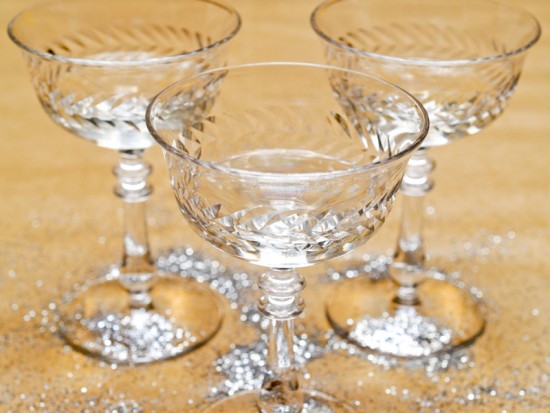
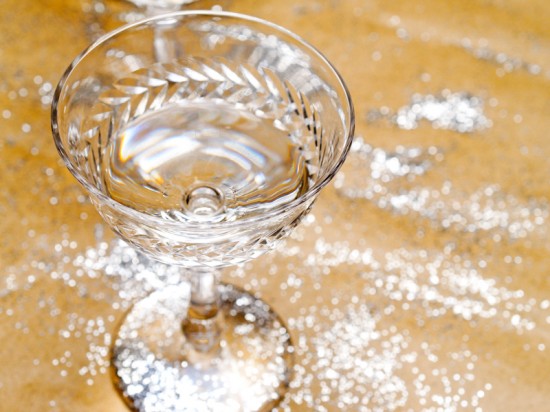

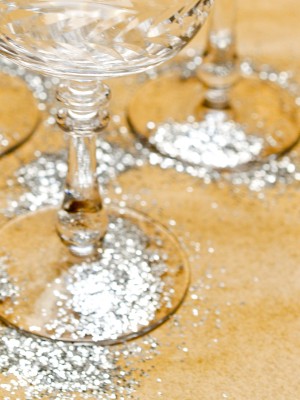

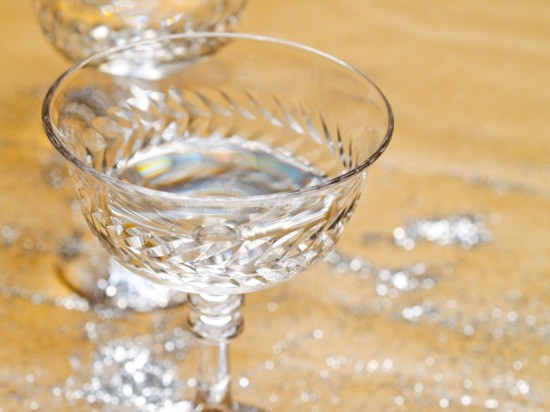
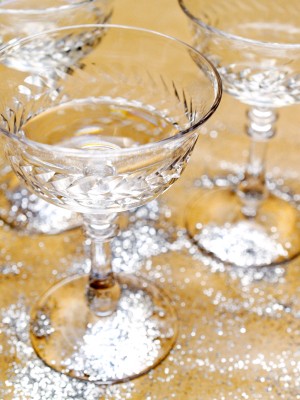
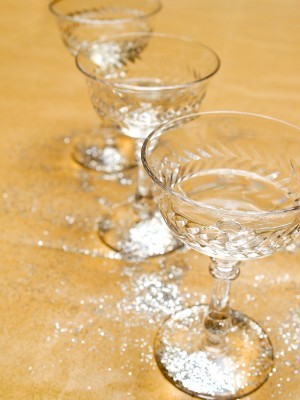
Love the glitter and those glasses!
I greatly look forward to your Cocktail Friday entries each week. First, I’m learning a lot about cocktails, but second and most importantly, it gets me into a festive mood and eager to start my weekend!
These glasses are gorgeous! Do you mind disclosing where you purchased them??
Rachael,
We got most of our glasses at the DC Big Flea Market, a big antiques fair held several times a year at the Dulles Expo Center in Chantilly, Virginia. Sadly, these glasses are ridiculously fragile and I have a tendency to break them, but it’s still really fun to serve cocktails in vintage glasses that probably held great drinks decades ago.